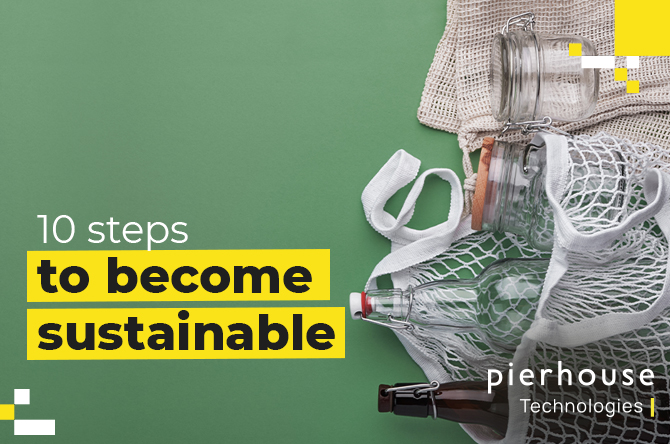As the world becomes more environmentally conscious and socially responsible, sustainable stores are gaining popularity among consumers. Today’s shoppers are more aware than ever of the impact their purchases have on the environment and society. As a result, they are actively seeking out brands that share their values and promote sustainable practices. By offering eco-friendly products and implementing sustainable initiatives, retailers can not only attract environmentally conscious customers but also create a positive impact on the planet. As a retailer, it’s crucial to embrace sustainability as a core value and demonstrate your commitment to the cause to attract and retain customers who prioritize sustainability in their purchasing decisions.
Brand and sustainability
The world is changing, and consumers demand more from brands they support. A recent survey found 62% want companies to take a stand on environmental, social, and political issues. Sustainable practices are not just a trend, but a core value for modern consumers. Retailers who prioritize sustainability can differentiate themselves from their competitors.
Patagonia is a perfect example of this, known for its sustainable practices and social responsibility. With a loyal customer base, sustainability helped it attract and retain customers and increased sales. Ekoplaza, a Dutch supermarket, saw significant sales increase with sustainability initiatives. Plastic-free packaging and sustainable sourcing resonated with customers.
Retailers prioritizing sustainability can benefit from increased foot traffic and sales. By creating a unique brand identity that resonates with customers, retailers can build a loyal following of environmentally conscious shoppers.

By implementing sustainable practices, retailers can not only reduce their carbon footprint but also benefit financially. By investing in energy-efficient lighting and renewable energy sources like solar panels, wind turbines, and geothermal systems, retailers can reduce their energy consumption and save money on energy costs. Furthermore, sustainable practices can help retailers create a unique brand identity that resonates with customers and attracts a new demographic of environmentally conscious consumers. As a result, retailers can increase foot traffic and sales while contributing to a healthier planet.
Financial benefits of sustainability
Retailers can reduce their energy consumption and become more sustainable by switching to energy-efficient lighting, implementing temperature controls, and optimizing their heating and cooling systems. Additionally, they can invest in renewable energy sources like solar panels, wind turbines, and geothermal systems.
Another approach is to focus on sourcing products and materials sustainably. Retailers can use eco-friendly packaging materials and source products from sustainable sources certified by reputable organizations such as the Forest Stewardship Council (FSC) or the Rainforest Alliance.
Retailers can encourage customers to make sustainable choices by providing information on eco-friendly products, offering recycling and disposal options, and implementing loyalty programs that reward customers for making sustainable choices.
Technology for sustainability
By going green, retailers can save money on energy costs, reduce waste, and improve their reputation and customer loyalty. Consumers are willing to pay more for environmentally friendly products and support brands committed to sustainability. Retailers can attract a new demographic of environmentally conscious consumers and differentiate themselves from competitors. Additionally, sustainable practices can help retailers comply with environmental regulations and avoid fines or legal issues.
Introducing technology as an in-store solution can significantly help retailers become more sustainable. By reducing energy consumption, waste, and carbon footprint while also enhancing the customer experience, technology can play a crucial role in shaping the future of retail.
Smart lighting is an excellent example of technology that can aid retailers in reducing energy consumption. By using sensors, the lights can adjust automatically based on factors such as the number of customers in the store, the time of day, and natural light levels. This ensures that lights aren’t left on unnecessarily, leading to substantial energy savings for the retailer.

In addition to smart lighting, electronic shelf labels (ESLs) can also help retailers become more sustainable. ESLs replace traditional paper labels with electronic displays that can be updated remotely, eliminating the need for paper, ink, and labor to print and replace paper labels. This results in significant cost savings and reduced waste.
Mobile checkout systems are another technology that can help retailers become more sustainable. By allowing customers to pay for their purchases using their smartphones, mobile checkout systems reduce the need for paper receipts and plastic bags. Retailers are also experimenting with virtual reality and augmented reality technologies to provide customers with an immersive shopping experience, which reduces the need for physical store displays and samples.
Summary
Overall, introducing technology as an in-store solution can help retailers become more sustainable, benefiting not only financially but also contributing to a healthier planet. By adopting sustainable technologies, retailers can reduce their carbon footprint and make a positive impact on the environment while also enhancing the shopping experience for their customers.






